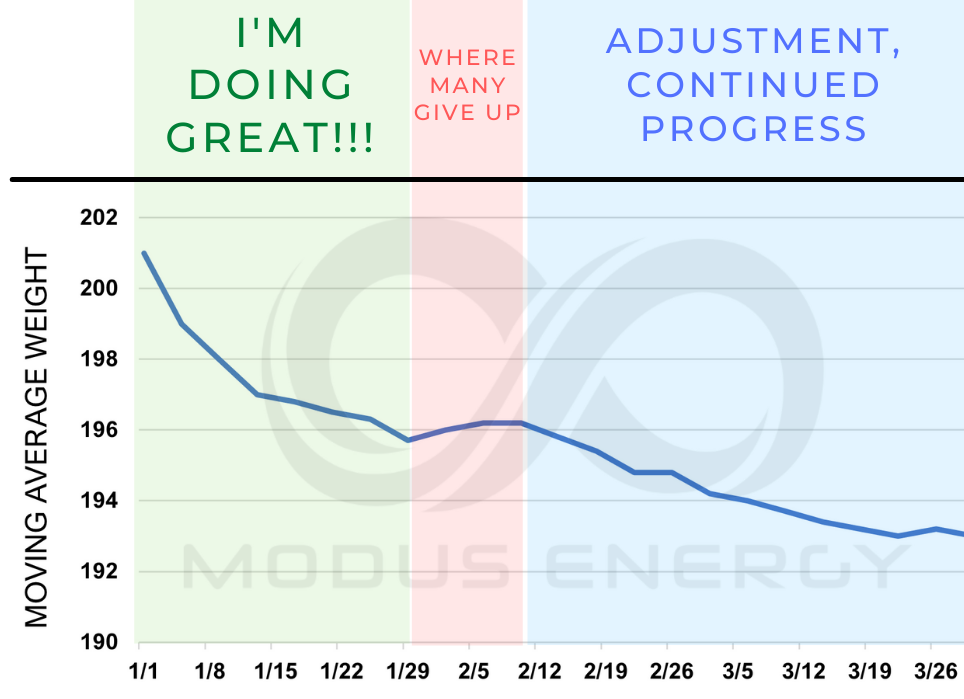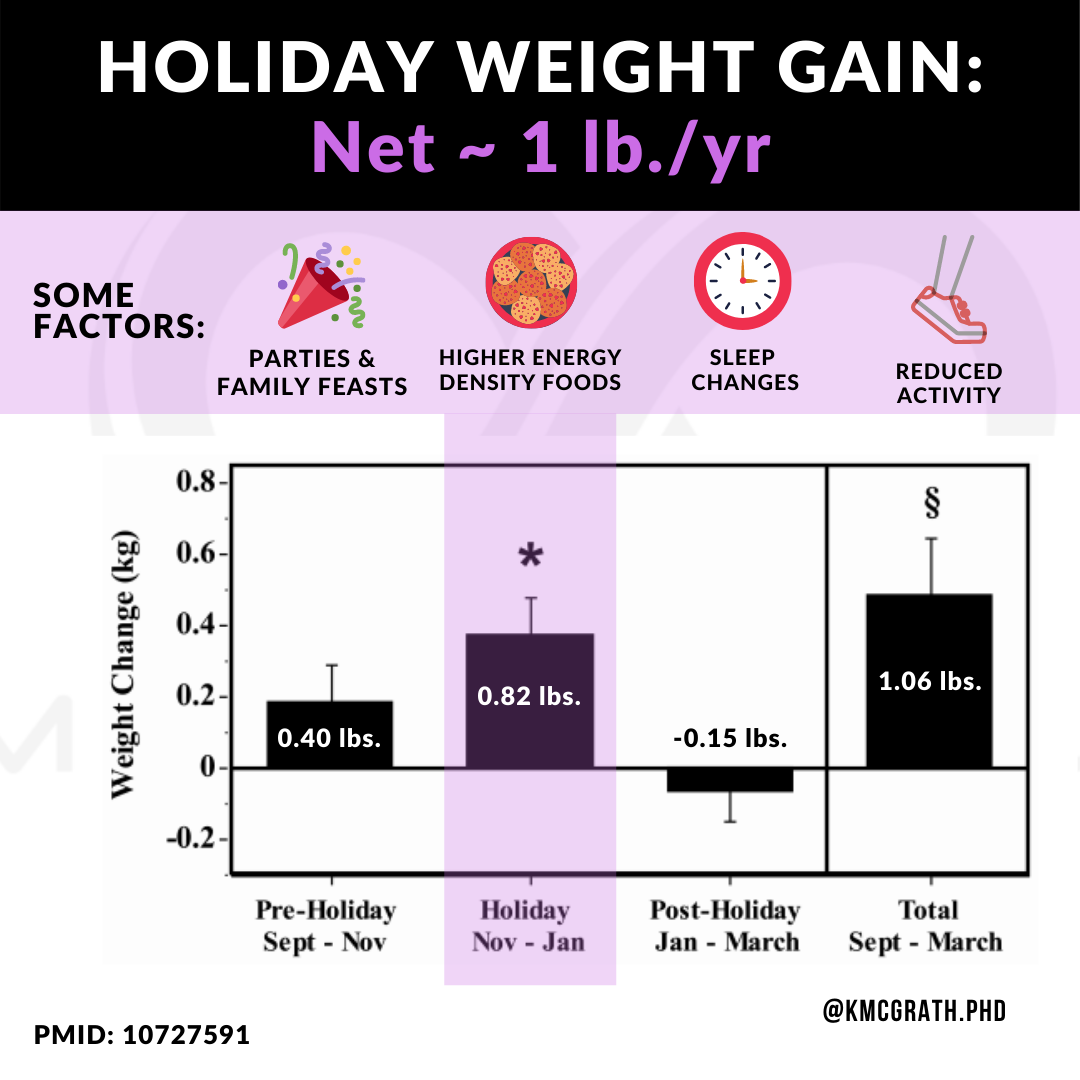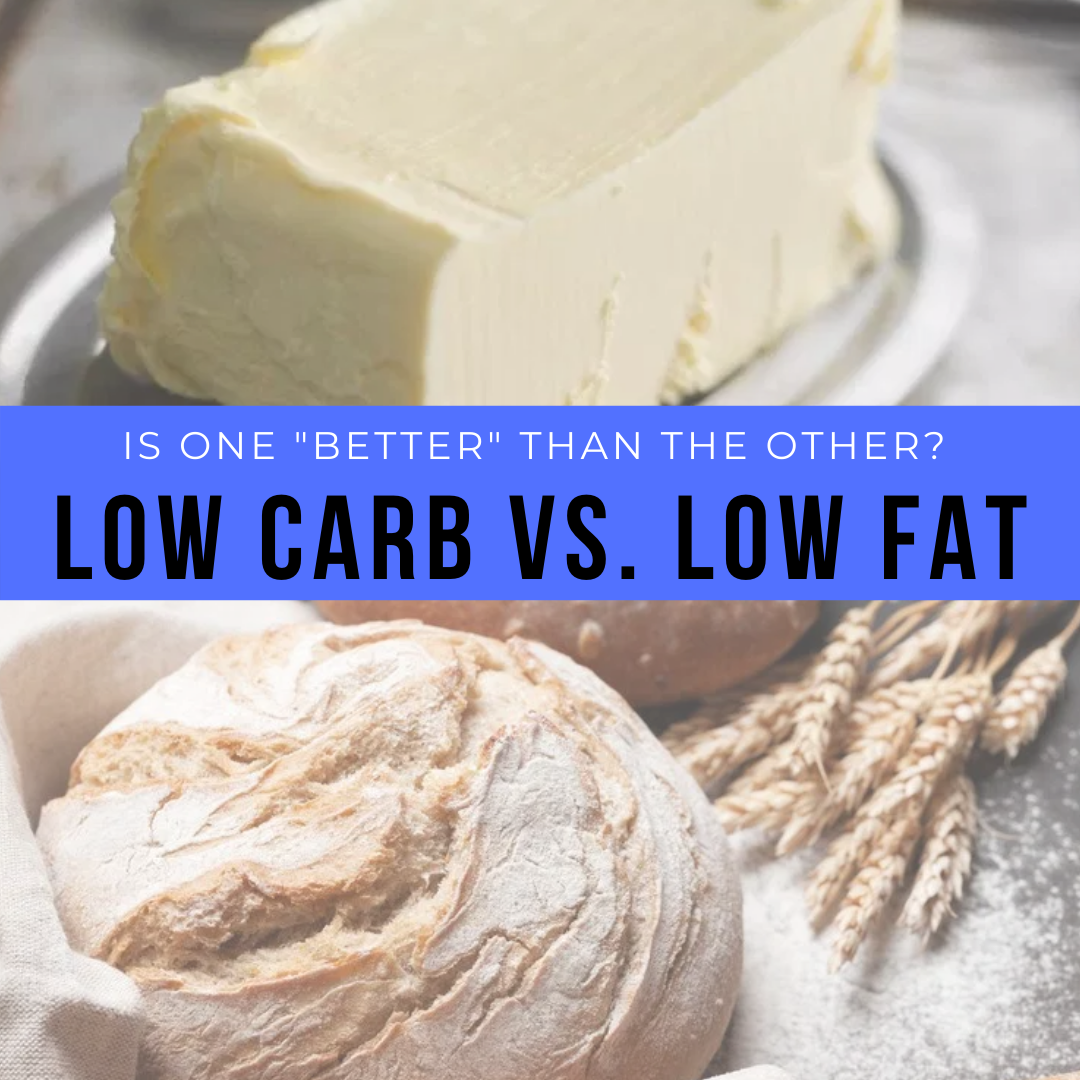
It’s frustrating to be consistent with nutrition, make amazing weight loss progress, but then for no reason hit a wall. Many give up when the scale stops moving. A fat loss plateau is disheartening.
You may be a bit relieved to hear that you’re not alone. A fat loss plateau – two or more weeks where the scale doesn’t move – is almost EXPECTED during a dieting phase. The good news is there are fundamental reasons why it happens, and there are methods to break through.

Need a plan and support to improve your physique, strength and energy? Contact me to explore options.
Why We Plateau
Human metabolism is dynamic and adaptive to changes in energy intake. Total daily energy expenditure (TDEE) aka “calories out” decreases in response to a sustained reduction in calorie intake. Two adaptations are primarily responsible:
- Reduction in basal metabolic rate (BMR). BMR is the energy we expend to breathe, move blood through our bodies, maintain organ function…basically to keep us alive. In a sustained calorie deficit, BMR slows down as we lose weight – the body is adapting to the calorie deficit. You don’t have much control over BMR.
- Reduction in non-exercise activity thermogenesis (NEAT). Whether you are aware of it or not, in a sustained calorie deficit you will expend less energy throughout the day – sitting for a bit longer than normal, less fidgeting, etc.
The body is driven to maintain balance. Therefore, when we place our bodies in an energy deficit through consumption of fewer calories (energy in < energy out), there are regulatory drivers that act to restore neutrality. For example, reductions in energy intake influences the rate of release of certain hormones. Ghrelin hormone is upregulated in an energy deficit, promoting increased feelings of hunger. Satiety hormone leptin is downregulated (due to shrinking size of fat cells and fatty acid mobilization). Further, “stress” hormone cortisol increases which can lead to reduced energy expenditure, and insulin sensitivity of fat cells increases (easier to assimilate glucose and store fat).
Calories in and calories out are not independent variables – they are influenced by one another. Energy intake level impacts energy expenditure level. Fat loss is not just a matter of calorie counting, NOR can we simply blame our hormones.
As you diet and lose weight, what was once calorie deficit becomes maintenance calorie level through metabolic adaptation. Therefore, it’s expected at some point there would be a fat loss plateau. To again achieve an energy deficit, energy intake and expenditure require adjustment.
We also need to consider that downward scale movement may not be the best indicator of fat loss. If you have recently initiated resistance training, are noticing your measurements change and/or you look different in photos, you may be building muscle while losing fat. In this case, the scale is not directly providing fat loss feedback.
Overcoming the Fat Loss Plateau
Before considering adjustments, perform an audit of current dietary compliance. There’s no need to reduce nutrients if energy intake is actually higher than the calories you are accounting for.
Dietary Compliance Audit
- “Extras”. Assess use of condiments and sauces – these can add 100’s of calories per day.
- Nibbles. Are you doing fly-bys of the fridge, and “just” having bites? It’s easy to lose sight of these unaccounted-for bites, but this accumulation of small amounts of additional calories throughout the day may take you out of a calorie deficit. Utilize mindfulness – all food consumed on a plate sitting down, with minimal distraction. Personally, I’m still working on this habit!
- Variability in dining out portions. Restaurant portion size and nutrition information is not tightly controlled. It may vary significantly depending on who is preparing your food. If you are eating out frequently and the cook is regularly overserving on portions, this could also be adding 100’s of additional calories per day or week
- Tracker inputs. Food entries in programs such as MyFitnessPal are user-generated, and potentially have errors. To be safe, double check your inputs against the nutrition information on the products you use. The USDA database is also an excellent source of nutrition information.
- Food Measurement – there’s a tradeoff between accuracy and practicality in “eyeballing” portions, using measuring cups (volume), and weighing food. If you feel that your portions may be off, consider weighing food for a period to make sure portions are accurate.
If the scale hasn’t budged for about 2 weeks and you’ve passed your audit, it’s time to consider adjusting your plan. We don’t want to do anything extreme or non-sustainable. Rather, make small changes to energy intake and expenditure.
Adjusting Energy Intake and Expenditure
- Small reduction in energy intake: reduce your calories in small steps versus large jumps – 50 to 100 calories/day is a good place to start. Wait a week or so between each step before deciding on further adjustment. You may find that in order to reduce calories it will require swapping out some higher calorie density foods for lower calorie dense foods to feel full.
- Increase daily movement (increase NEAT): it’s not sustainable to continually increase exercise to offset metabolic adaptation. You can’t out-exercise your diet. Rather, consider a few easy NEAT habits! Assuming you are sleeping 8h per day and training 1 hour per day, that leaves more than 60% of your waking hours to get in a bit more movement! Some examples of NEAT are walking when you’re talking on the phone, parking further away while out shopping, going for a dog walk, cleaning the house, and of course doing a quick happy dance for no reason. You may find that this extra movement helps your mood and overall energy stability throughout the day as well.
Final Thoughts on the Fat Loss Plateau
If you are experiencing significant fatigue and stress, gym performance has crashed, have negative changes in sleeping, or are noticing unhealthy feelings about food, a plateau may be a sign to take a break. By shifting into maintenance, you’ll provide yourself with breathing room to enjoy more flexible eating. This has physical and psychological benefit. It’s perfectly acceptable to hit the pause button on fat loss and focus on stability. Likewise, if you’ve been dieting strictly for an extended period of time, consider taking a couple of months in energy maintenance before proceeding with further fat loss.





